Last-Minute NYC Holiday Gift Guide 🎁
We’ve created a holiday gift guide with presents for the intrepid New Yorker that should arrive just in time—


From heists that have inspired movies to a deadly terrorist attack in 1920 whose traces still remain, revisit 5 notorious crime scenes in NYC!
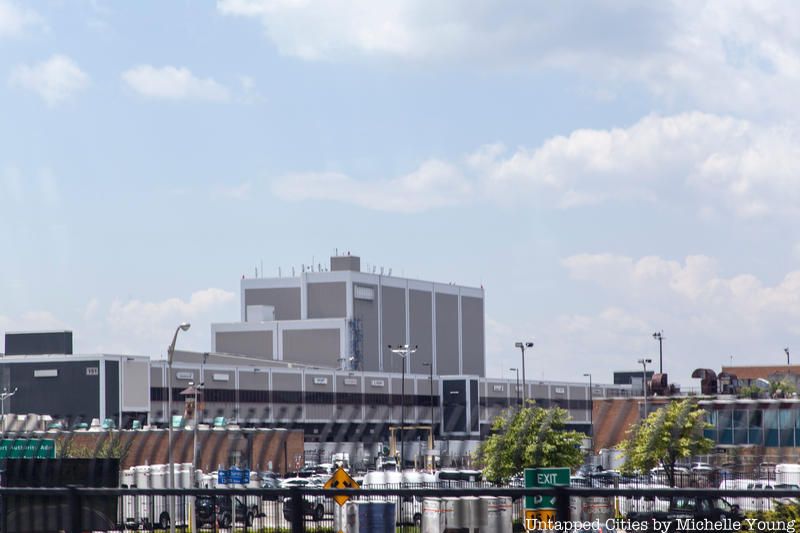
Sometimes real life is as strange as a movie. JFK Airport was the site of the largest robbery of cash on American soil: the Lufthansa heist, featured in Martin Scorcese’s Goodfellas. In December 1978, thieves from the Lucchese crime family snuck into cargo building 261 at 3 a.m. Just over an hour later, they got away with $5 million in cash and $875,000 in jewelry, a combined $21 million in today’s money. After the heist, organizer Jimmy “The Gent” Burke ordered the murder of many of the participants in order to keep them quiet. He was later convicted of one of those murders and sentenced to life in prison.
With such heavy airport security now, could the thieves have carried out the heist today? That’s not hypothetical, as apparently, they could. In November 2012, two thieves made off with 3,600 iPad mini’s (valued between $1.5 and $1.9 million) from the same cargo building the Lufthansa robbers targeted. The iPads had just arrived from China and were supposed to be shipped throughout the US. Police later arrested a JFK worker for the robbery, but it’s unknown if the iPads were ever recovered.
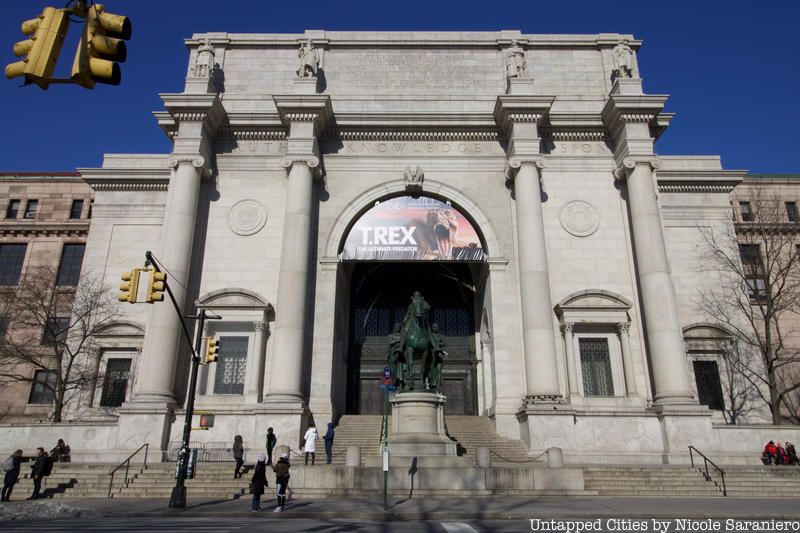
On October 29, 1964, two young thieves managed to break into the Hall of Gems and Minerals (now named after Harry Frank Guggenheim) at the American Museum of Natural History after hours to grab 24 priceless (and somehow uninsured) gems, including the Star of India (the world’s largest sapphire), the Midnight Star (the world’s largest black sapphire), and the De Long Star Ruby, considered the world’s most perfect ruby. The stones, in total, were worth the equivalent of approximately $3 million dollars today.
The thieves, along with another accomplice, were arrested quickly because of their own indiscretions following the heist. Tracking down the jewels, however, was a much more laborious task. To this day, only 10 of them have been recovered. The Star of India, the Midnight Star, and the De Long Star Ruby, luckily, did make their way back to the museum and continue to be prominently displayed, albeit with much more protection.
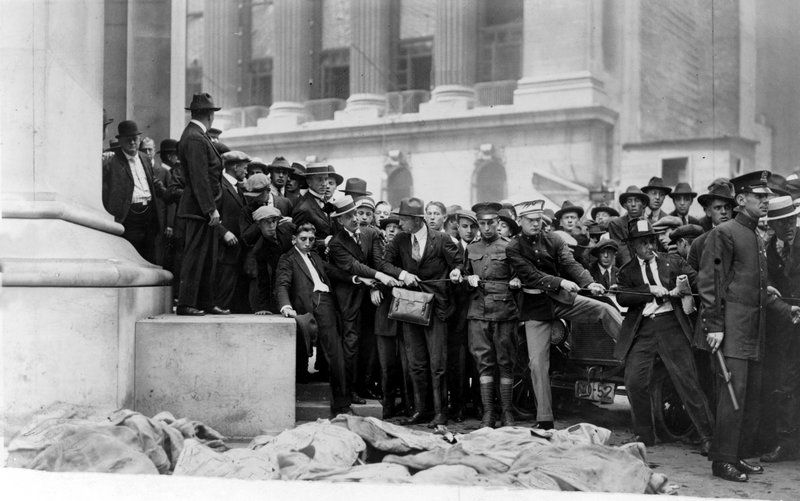
Around noon on September 16, 1920, an unattended horse-drawn wagon exploded outside the JP Morgan & Co. office on the corner of Wall and Broad Streets, just a couple hundred feet from the New York Stock Exchange. The bomb left more than 30 people dead and hundreds more injured.
Despite exhaustive searches, the bomber’s identity has remained a mystery. It’s suspected that the bombing was carried out by anarchists, Communists, or Socialists, perhaps as revenge for the indictment of anarchists Nicola Sacco and Bartolomeo Vanzetti for murder. A few days after the bombing, a note was found in a mailbox at Cedar Street and Broadway that read:
“Remember. We will not tolerate any longer. Free the political prisoners or it will be death for all of you. American Anarchist Fighters!”
Today, the JP Morgan building still stands, and is a National Historic Landmark. The only trace of the bombings are small pockmarks in the stone walls. Morgan supposedly forbade anyone from fixing the blemishes, instead leaving them as a testament to the bombers’ failure to destroy his building. Until the Oklahoma City bombings in 1995, this was the deadliest terrorist attack on American soil.
In 1989, JP Morgan moved its offices to 60 Wall Street (now home to Deutsche Bank) before establishing its current 270 Park Ave location. The original House of Morgan at 23 Wall Street was later sold to be developed as condominiums. The building also had a cameo in The Dark Knight as the exterior of the Gotham City Stock Exchange.
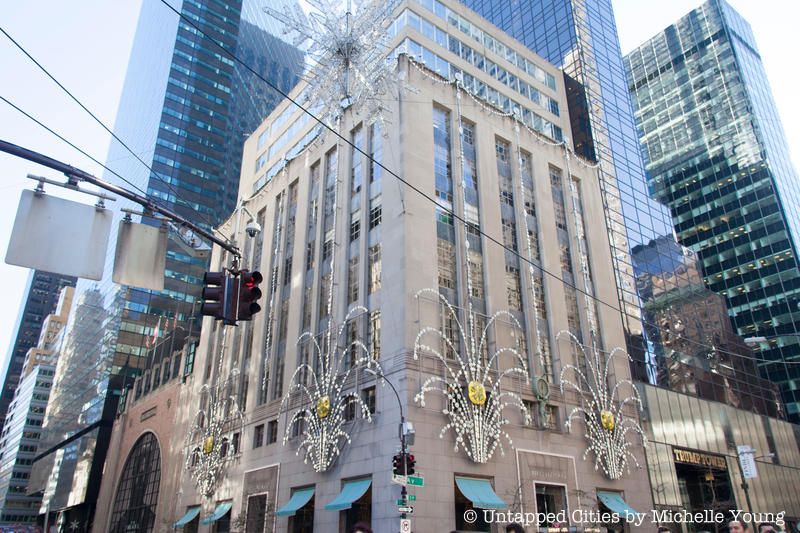
Diamonds are certainly a thief’s best friend, as this famed jewelry store–which the New York Times called “only slightly more vulnerable than the nation’s gold reserves at Fort Knox–has had more than a dozen robberies through the years. In one incident, according to the Times, a man shot a hole in a glass window and tried to fish out a diamond/ruby necklace with a wire. In September 1994, two armed men dodged the alarms and guards in a “very, very professional job” that was, at the time, the costliest robbery in the company’s 157-year history. They made off with $1.25 million (later calculated to be an even greater $1.9 million) in jewelry (over 300 items) and even covered all tracks by taking the security tapes. While no one was injured, the robbers left four guards bound and made it in and out of the store in a little over an hour. Because they seemed to be so familiar with the security checkpoints and layout, the police suspected the robbery to be an inside job.
A week later, police arrested six men, including two Tiffany employees. Most of the jewelry was recovered, but while the job was “very, very professional,” the aftermath wasn’t. One of the robbers reportedly tried to sell a diamond bracelet worth $6,000 for just $300 on the street, while another tried to sell pieces in Times Square.
Police success in catching these robbers didn’t deter future jewel thieves. Just this year, there have already been two reported thefts at Tiffany’s. In June, a man walked out of Tiffany’s with $100,000 in jewelry. Earlier this month, another, more “professional” job was revealed as former Tiffany Vice President of Development Ingrid Lederhaas-Okun allegedly stole and resold $1.3 million in jewelry throughout her tenure.
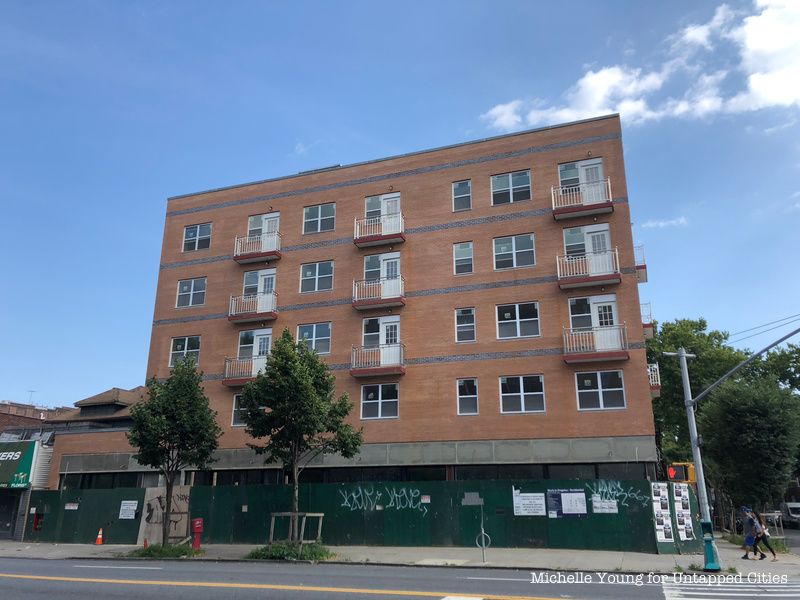
The events of August 22, 1972 at a Brooklyn branch of the Chase Manhattan Bank were glamorized in the 1975 Al Pacino drama Dog Day Afternoon, but the real version is just as thrilling. Just before the bank closed that afternoon, John Wojtowicz and Sal Naturale entered with a shotgun, handgun and rifle, planning to lock the employees in the vault and escape with the money. Wojtowicz reportedly wanted the money to help his gay lover Ernest get a sex change operation.
NYPD and FBI agents rushed to the scene and the situation quickly escalated into a hostage showdown. Seven people were held at gunpoint inside the bank. In the next fourteen hours before the police regained control, Wojtowicz made a series of demands, as recounted by Arthur Bell to the Village Voice: he wanted the police to bring Ernest inside the bank, a delivery of hamburgers and Cokes and transport to JFK with a plane waiting for his escape. The police transported him to JFK but managed to immobilize Wojtowicz and kill Naturale. Wojtowicz was jailed for 14 years before dying of cancer in 2006, and Ernest, who became Elizabeth after a sex change, died of AIDS in 1987.
The site of the bank later became a medical center, but after the building was demolished and the lot was abandoned. A new apartment building stands there now.
Read, check out more on Notorious Crime Scenes in NYC and 10 Major Art Heists at the Met Museum
Subscribe to our newsletter